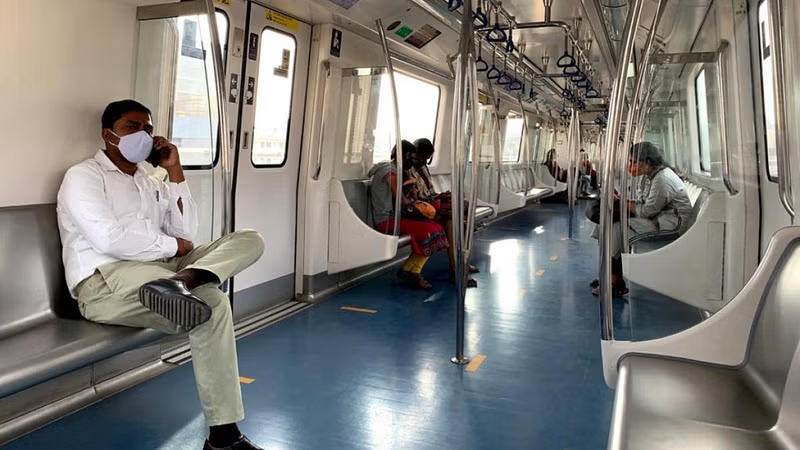Namma Metro Ridership Plummets as Fare Hike Pushes Commuters Away
Bengaluru’s Namma Metro is witnessing a sharp drop in daily ridership following the recent fare hike, despite a partial revision aimed at mitigating passenger backlash. The ridership on Monday, February 17, stood at 7.8 lakh, down by 40,000 from the previous Monday’s 8.2 lakh. The decline began immediately after the revised fares took effect on February 9, with the daily commuter count falling by 50,000 compared to the previous week. While authorities claim to have capped the fare increase at 70%, commuters argue that long-distance passengers remain severely impacted, forcing many to seek alternative transport modes such as BMTC buses and private vehicles. The weekend numbers have also taken a hit, with ridership plummeting to 5.3 lakh on February 16, down 90,000 from the previous Sunday’s 6.2 lakh.
Civic and Urban Mobility Concerns
The steep fare increase has not only affected office-goers but also low-income passengers, who now find Namma Metro less affordable. Regular commuters like Sethuraman, who travels from Hoodi to Cubbon Park, claim that the fare adjustment was merely an eyewash, as their daily expense has surged from ₹70 to ₹120. This has led to a shift towards private vehicles, exacerbating Bengaluru’s notorious traffic congestion. Prasanna, another daily commuter, highlights the issue of affordability, stating that public transport must remain accessible to all income groups, not just those who can afford premium pricing. Compared to metros in cities like Kochi, Delhi, and Mumbai, which offer student discounts and subsidised passes, Bengaluru lacks a structured fare model that balances sustainability with commuter affordability.
Sustainability Challenges and Public Transport Impact
The dip in Metro ridership raises broader concerns about Bengaluru’s sustainable urban transport policy. The primary objective of Namma Metro was to decongest the city, but a prohibitive pricing structure is driving people back to private vehicles, increasing carbon emissions and road congestion. Despite Bengaluru’s ambitious plans for green mobility, the recent fare revision contradicts the push for public transport adoption. The monthly Metro ridership in January stood at 2.5 crore, averaging 8 lakh daily passengers, but post-hike, ridership has surpassed 8 lakh only once. In comparison, cities like Delhi, which operates a more extensive Metro network, have consistently maintained higher ridership through dynamic pricing models that encourage commuter retention.
Policy Response and Need for Reforms
Responding to concerns, BMRCL Managing Director Maheshwar Rao stated that authorities are reviewing ridership data before making further decisions. However, commuters demand immediate corrective action, such as reintroducing discounted travel passes for students and daily passengers. Transport experts argue that a sustainable Metro pricing strategy should prioritise long-term affordability while maintaining operational viability. As Bengaluru continues to expand, policymakers must ensure that Namma Metro remains a reliable, cost-effective, and sustainable alternative to road transport, fostering greener, more efficient urban mobility.




